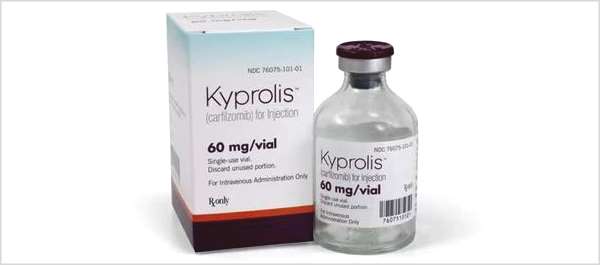Leave a Comment:
1 comment
[…] Pay-for-performance is the Cure for Multiple Myeloma […]
Reply
Multiple Myeloma an incurable disease, but I have spent the last 25 years in remission using a blend of conventional oncology and evidence-based nutrition, supplementation, and lifestyle therapies from peer-reviewed studies that your oncologist probably hasn't told you about.
Click the orange button to the right to learn more about what you can start doing today.

Depending on what study you are reading chemotherapy doesn’t really add much to average overall survival. Combination chemotherapy cocktails work more often. So why did I undergo aggressive chemotherapy regimens? Because my oncologist told me to. I was diagnosed with a multiple myeloma (MM), an incurable cancer and I didn’t know what else to do. I had never heard of “pay for performance.”
To add insult to injury, not only did my chemotherapies not work (10 months of partial remission) I have lived a life of long-term and late stage side effects since my autologus stem cell transplant back in ’95. Even when a chemotherapy causes your tumor burden to shrink, depending on your stage at diagnosis, your cancer usually relapses.
The solution?
Pay-for-performance. Piece workers do it, commissioned salespeople do it, why not MM patients? Of the examples of pay-for-performance drug therapies below, my favorite is Ampyra, made by Acorda Therapeutics.
Let me pose several hypothetical situations that are typical for MM patients.
Three reasonable scenarios for the newly diagnosed MM patient. The reality is that the MM patient for the first two scenarios pay the exact same thing. The third MM patient pays a fraction of what the first two MMers pay.
Be honest. What would you pay for each of the three scenarios above?
I achieved complete remission from my incurable cancer by undergoing a non-conventional therapy. I have remained in complete remission since ’99 by living an evidence-based, non-toxic, anti-cancer lifestyle through nutrition, supplementation, bone health therapies and more.
To learn more about integrative therapies to enhance the efficacy of conventional chemotherapy while reducing its toxicity, scroll down the page, post a question or comment and I will reply ASAP.
thank you,
David Emerson
“Value Versus Cost- The problem is not the conversation about health care costs, but the misrepresentation of the role of drug costs. “I think it is very important that clinicians work with formal economists in this conversation. We do not have the formal training to completely understand or develop the analysis that could best inform what to do,” Dr Fonseca said.
Cost only partly contributes to value. According to Dr Fonseca, value means that “patients, society, and payers are getting a return economic benefit from the investment in paying for medications for the treatment of cancer.” Different measurements of value exist, such as cost per quality-adjusted life-year, but Dr Fonseca noted that many metrics fail to consider all aspects of value, including the value of life after a cancer diagnosis.
“Express Scripts Holding Co. , a large manager of prescription-drug benefits for U.S. employers and insurers, is seeking deals with pharmaceutical companies that would set pricing for some cancer drugs based on how well they work…
The effort is part of a growing push for so-called pay-for-performance deals amid complaints about the rising price of medications, some of which cost more than $100,000 per patient a year..
“If pharma is truly sincere about wanting value-based reimbursement, we now have the sophistication to do that.”
One example is Bluebird Bio Inc., which is developing an experimental gene therapy for rare diseases. At a health-care conference in February, Chief Executive Nick Leschly said that if the therapy makes it to market, he would consider asking insurers to make an upfront payment to cover costs and risk of development, plus additional ongoing payments if it works for a patient…
Other drug makers are trying different models. Since 2011, Acorda Therapeutics Inc. has provided its drug Ampyra, which can help multiple-sclerosis patients improve their walking, free for the first two months.
The reason: Studies have shown it only works in about 40% of patients, but there is no way to predict before starting therapy who will benefit. The two-months free program gives patients time to figure out if the drug is working—they usually know within several weeks, says Acorda Chief Executive Ron Cohen. If the drug works, the company begins charging the regular price, or about $21,000 a year per patient…
[…] Pay-for-performance is the Cure for Multiple Myeloma […]
Reply